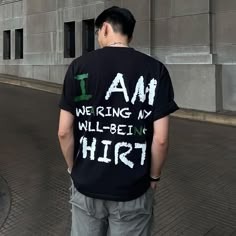
The Timeless Appeal of T-Shirt: A Comprehensive Guide
Introduction
T-shirts are a staple in wardrobes across the globe. They are versatile, comfortable, and suitable for almost every occasion. Originally designed as undergarments, t-shirts have evolved into one of the most popular clothing items in modern fashion. This article explores the history, cultural significance, types, materials, and future trends of t-shirts.
The History of T-Shirts
The origin of the t-shirt can be traced back to the late 19th century when workers and soldiers wore them as undershirts. The modern t-shirt as we know it today became popular in the early 20th century, particularly during World War I when American soldiers noticed European soldiers wearing lightweight, comfortable cotton undershirts instead of the heavy wool uniforms used by the U.S. military. After the war, the t-shirt gradually became a common piece of casual wear.
By the 1950s, Hollywood movies helped to cement the t-shirt’s status as a fashion statement. Icons like Marlon Brando in “A Streetcar Named Desire” and James Dean in “Rebel Without a Cause” wore plain white t-shirts, making them symbols of youth rebellion and effortless cool. From there, t-shirts transitioned into mainstream fashion, becoming a universal piece of clothing worn by people of all ages and backgrounds.
The Cultural Significance of T-Shirts
T-shirts are more than just clothing; they have become a canvas for self-expression. Over the decades, t-shirts have played a significant role in pop culture, politics, and social movements.
- Music and Band Merchandise – Rock bands in the 1960s and 1970s began selling t-shirts as part of their branding. Fans wore band tees to showcase their loyalty and musical taste. Today, band t-shirts remain a fashion staple.
- Political Statements – T-shirts have been used to promote social causes and political messages. Activists and protesters often wear t-shirts with slogans advocating for change.
- Brand Identity and Marketing – Companies have used t-shirts as promotional tools, embedding their logos and slogans to create brand awareness.
- Pop Culture and Fashion Trends – Graphic t-shirts, meme-inspired designs, and collaborations with designers have turned t-shirts into high-fashion items.
Types of T-Shirts
T-shirts come in various styles, cuts, and designs. Here are some of the most popular types:
- Classic Crew Neck – This is the most common style with a round neckline and short sleeves. It is versatile and suits most body types.
- V-Neck – Featuring a V-shaped neckline, this style is considered more stylish and can elongate the neck.
- Polo Shirt – A t-shirt with a collar and buttons, often worn in semi-formal settings.
- Henley T-Shirt – Similar to a polo but without a collar, featuring a buttoned placket.
- Raglan T-Shirt – Also known as a baseball tee, this shirt has contrasting sleeves that extend to the collar.
- Long Sleeve T-Shirt – Offers more coverage and is ideal for cooler weather.
- Tank Top – Sleeveless and often worn in warm weather or as activewear.
- Graphic T-Shirt – Features printed images, designs, or slogans, often used to convey messages or artistic expression.
Materials Used in T-Shirts
The fabric of a t-shirt affects its comfort, durability, and overall quality. Here are some of the most commonly used materials:
- Cotton – Soft, breathable, and comfortable, cotton is the most popular fabric for t-shirts. It is available in different varieties like organic cotton, combed cotton, and Pima cotton.
- Polyester – A synthetic fiber known for its durability, moisture-wicking properties, and resistance to shrinking.
- Blended Fabrics – Many t-shirts are made from a mix of cotton and polyester, combining the benefits of both materials.
- Linen – A lightweight, breathable fabric ideal for warm climates.
- Rayon – A soft, drapey fabric that mimics the feel of silk, often used in fashion-forward designs.
- Bamboo – An eco-friendly option known for its softness and sustainability.
How to Style a T-Shirt
T-shirts are incredibly versatile and can be styled in numerous ways:
- Casual Look – Pair a basic t-shirt with jeans and sneakers for a classic, everyday outfit.
- Smart-Casual Look – Wear a polo or a well-fitted plain t-shirt with chinos and loafers for a polished appearance.
- Layering – Use a t-shirt as a base layer under a blazer, denim jacket, or flannel shirt.
- Streetwear Style – Oversized graphic t-shirts paired with joggers and sneakers create a trendy, urban look.
- Athleisure – Combine a moisture-wicking t-shirt with leggings or track pants for a comfortable yet stylish gym-to-street outfit.
The Future of T-Shirts
With advancements in technology and growing concerns about sustainability, the future of t-shirts is evolving. Some emerging trends include:
- Sustainable Fabrics – The fashion industry is shifting towards eco-friendly materials like organic cotton, recycled polyester, and biodegradable fabrics.
- Smart T-Shirts – Innovations in wearable technology have led to the development of t-shirts with built-in sensors that monitor health metrics like heart rate and temperature.
- Customizable Designs – Online platforms now allow users to create personalized t-shirts with unique prints, embroidery, and designs.
- Eco-Friendly Production – Brands are adopting sustainable manufacturing processes, reducing water consumption, and using non-toxic dyes.
- Minimalist Aesthetic – Simple, high-quality t-shirts with neutral colors and clean designs are gaining popularity.
Conclusion
T-shirts have come a long way from being basic undergarments to becoming fashion statements, marketing tools, and symbols of cultural identity. Their timeless appeal, versatility, and comfort make them a wardrobe essential for people of all ages. As fashion trends continue to evolve, the t-shirt will remain a fundamental piece of clothing, adapting to new styles, materials, and technologies.
Whether you prefer a plain white tee, a graphic design, or a high-end designer collaboration, there is a t-shirt for everyone. Its ability to transcend social and cultural boundaries ensures that it will always have a place in fashion history.
